

Damion Smy
Boxy new KGM Musso unveiled to take on HiLux and Ranger ahead of Australian launch
6 Hours Ago

News Editor
Hyundai will soon have replacements for two of its most popular models.
Korean outlet ET News reports the second-generation Kona will enter production later this month ahead of a Korean-market launch and deliveries beginning in January, while the next-generation Santa Fe will be released in the second half of 2023.
A facelifted Tucson is also expected at some point.
Expect Australian-market launches to follow a few months after the vehicles are introduced in South Korea.

The new Kona will reportedly enter production first in petrol and hybrid guises, with the Kona Electric, N Line and N following.
Spy photos have revealed what appears to be larger dimensions for the Kona.
A recent spy photo also showed the Kona’s rear end sticking out from its camouflage, revealing a particularly slim, full-width light bar.
It appears the front will feature a similar design element, much like the Staria people mover, and will retain split lighting elements – a motif debuted on the Kona that has since been rolled out across Hyundai’s SUV range.
Inside, the next-generation Kona features a digital instrument cluster and infotainment touchscreen situated in the same housing plus extensive use of bright, metal-look trim, giving it a strong resemblance to the Ioniq 5.
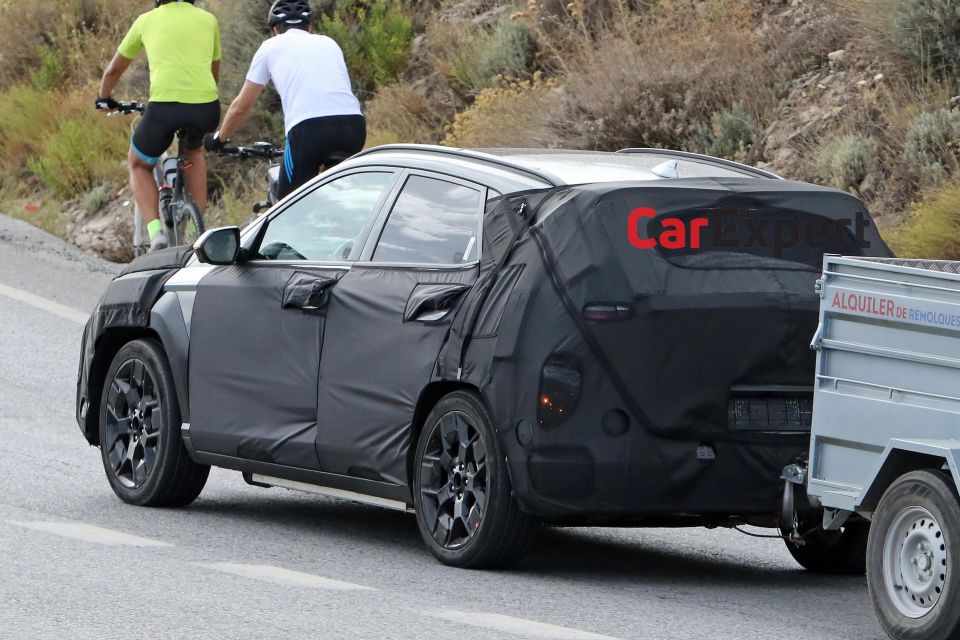
By moving the Kona closer to its Kia Seltos corporate cousin in size, Hyundai can help give its smaller SUVs – the i20-based Bayon for Europe, the Venue for most other markets – some breathing room.
The current Kona measures between 4205mm and 4215mm long, 1800mm wide and 1550-1560mm tall on a 2600mm wheelbase.
That’s around 160-200mm shorter than a Kia Niro or Seltos. The current Kona’s compact dimensions also see it offer less boot space than an i30 hatchback.
The Kona Electric will reportedly be produced not only in South Korea but also in the US, following the introduction of the Inflation Reduction Act there that removed tax credits for imported EVs.
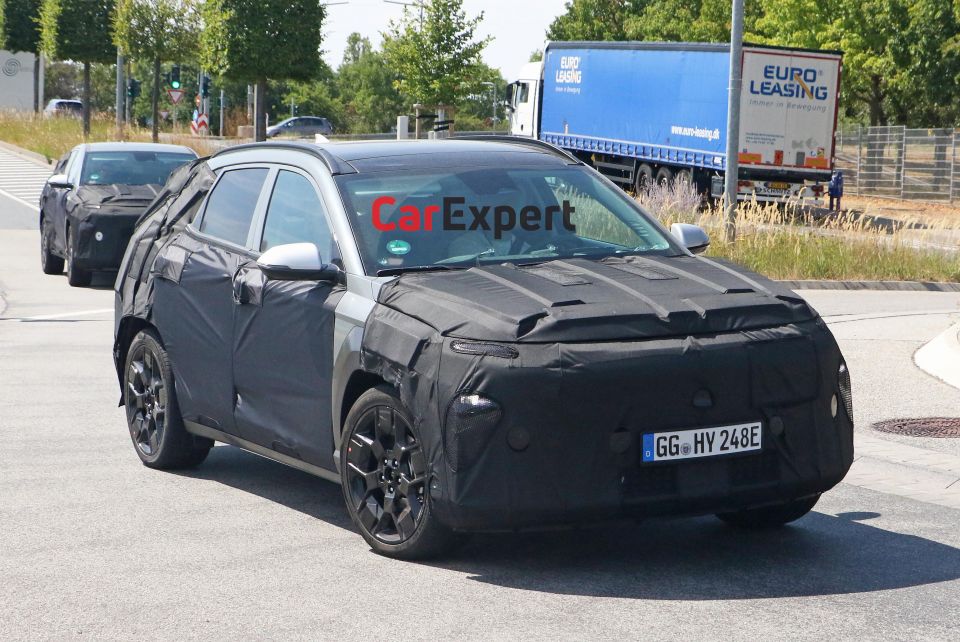
The EV could share its electric powertrain with the second-generation Kia Niro, which uses a 64.8kWh battery and a 150kW/255Nm front-mounted electric motor.
It’s unclear whether the current powertrain line-up will carry over. The Kona is currently sold here with a choice of naturally aspirated or (in the N) turbocharged 2.0-litre four-cylinder engines, plus a turbocharged 1.6-litre four.
Hybrid and diesel options are available in other markets.
The related Kia Seltos now shares the same tune of the turbo 1.6-litre as Kona N Line models, but has swapped the seven-speed dual-clutch for an eight-speed torque-converter automatic for 2023.
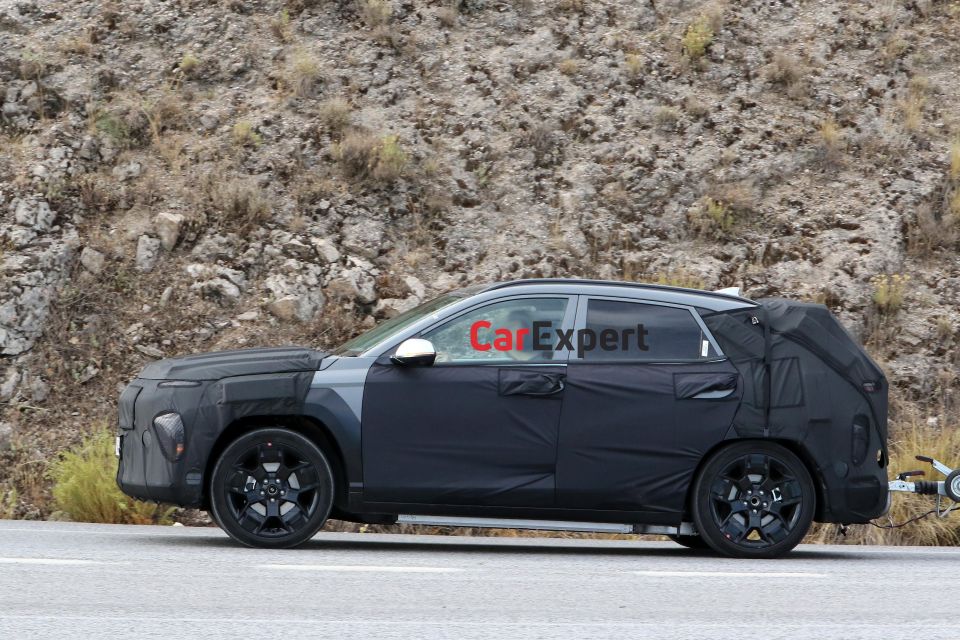
Whether the new Kona could also serve as a replacement for the current i30 hatchback is unclear. The latter has already been discontinued in North America and South Korea due to slow sales, and last year it was outsold two-to-one in Europe by the Kona.
Codenamed SX2, the new generation will replace the current, first-generation model which first entered production in 2017.
The Kona and Santa Fe only recently received substantial updates for 2021, with Hyundai claiming the mid-life update of the latter saw it move to a new platform.
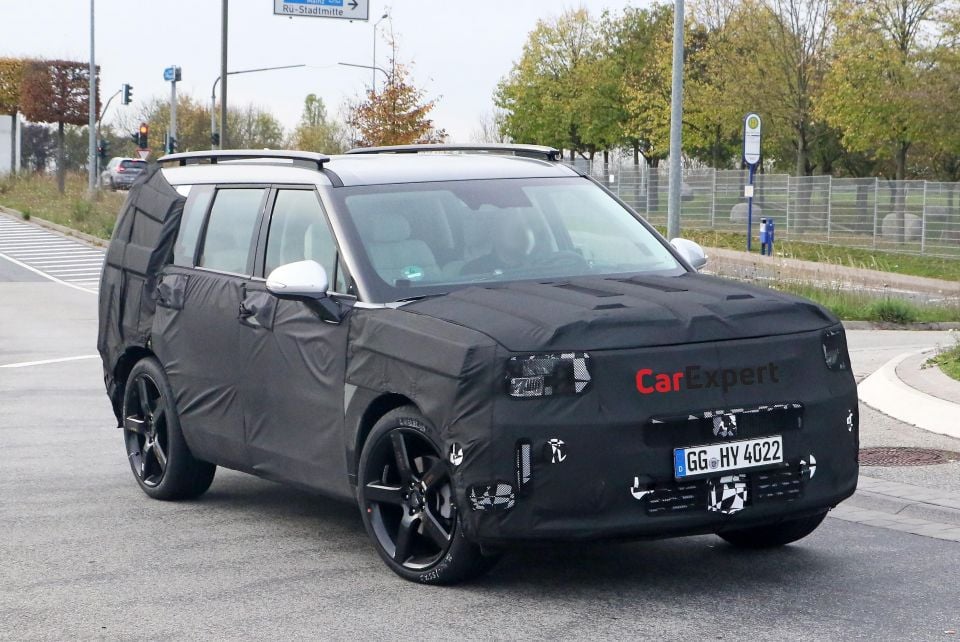
Like the new Kona, the Santa Fe has also been extensively spied testing.
While the new Kona’s design language could be described as evolutionary, the new Santa Fe is anything but.
Hyundai has thrown out the current design language for a boxy look more akin to a Land Rover Defender than any Santa Fe before.
It’s unclear what powertrains will be offered in the new crossover, which is also expected to grow in dimensions.

Depending on the market, the current car is offered with a choice of naturally aspirated or turbocharged 2.5-litre four-cylinder engines, turbocharged 1.6-litre four-cylinder hybrid and plug-in hybrids, a 2.2-litre turbo-diesel four and a naturally aspirated 3.5-litre V6.
Hyundai only just launched a facelifted Palisade this year, while the current, fourth-generation Tucson reached local showrooms in 2021.
The introduction of a new Kona and Santa Fe will therefore give Hyundai one of the newest SUV fleets on the market. The entry-level Venue is the oldest of the line-up, having launched in 2019, but it’s expected to receive updates soon.
An updated Venue for the Indian market was revealed earlier this year.

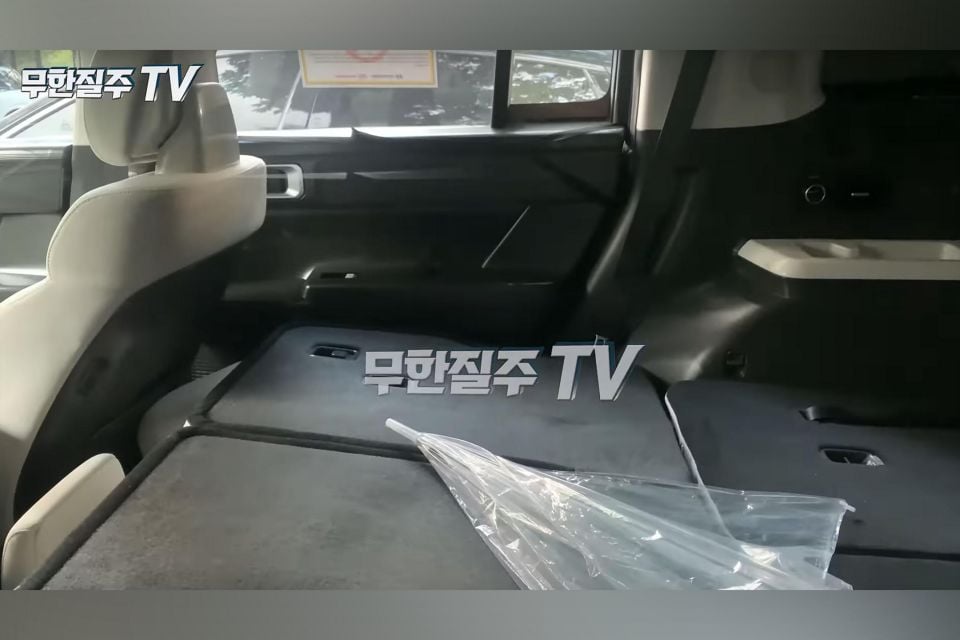
MORE: Everything Hyundai Kona MORE: Everything Hyundai Santa Fe
Where expert car reviews meet expert car buying – CarExpert gives you trusted advice, personalised service and real savings on your next new car.
William Stopford is an automotive journalist with a passion for mainstream cars, automotive history and overseas auto markets.


Damion Smy
6 Hours Ago


Damion Smy
7 Hours Ago


Damion Smy
9 Hours Ago


Damion Smy
11 Hours Ago


Damion Smy
12 Hours Ago


Damion Smy
13 Hours Ago